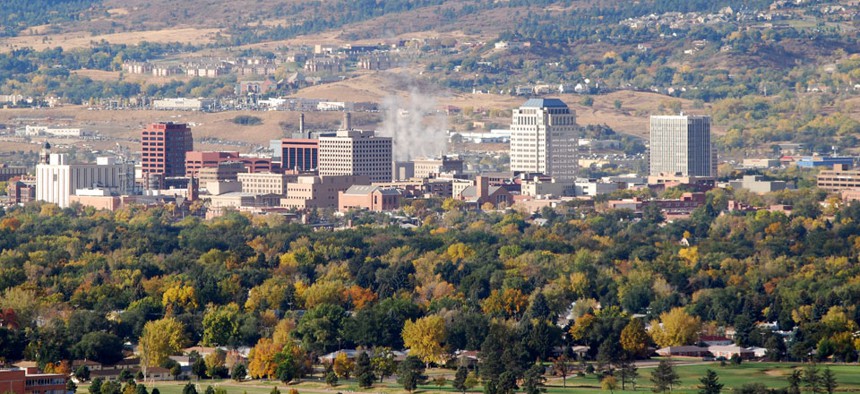
Wikimedia Commons
Which Metro Area Has the Highest Share of Federal Employees? Hint: Not Washington
The D.C. area actually ranks fourth in concentration of federal workers.
There has been much talk lately about the effects of pay freezes, sequestration, furloughs and government shutdowns on the federal workforce and the overall economy. Naturally, the hardest-hit areas over the long haul are likely to be the ones with the highest concentrations of federal employees.
You might think that list would start with Washington, D.C., but, as Richard Florida writes in the Atlantic Cities, that would be wrong. Florida asked analysts at the labor market data and research firm EMSI to analyze population and economic data, and here's what they found:
Of course there is an understandably large concentration of federal employment around greater Washington, D.C. However, the D.C. metro – with 14.1 percent of its workforce made up of federal employees – actually ranks fourth in terms of the share of its workforce made up by the federal government. Topping it are Colorado Springs (with a 16.4 percent federal share), Virginia Beach (16.1 percent), and Honolulu (15.4 percent).
In addition, federal government workers made up ten percent or more of all employment in three additional metros: Ogden-Clearfield, Utah (11.1 percent); El Paso (11 percent); and San Diego (10 percent). And federal employment comprised between 5 and 10 percent of all jobs in an additional ten metros: Augusta, Georgia; Baltimore, Maryland; Charleston, South Carolina; San Antonio, Texas; Oklahoma City, Oklahoma; Dayton, Ohio, Columbia, South Carolina; Jacksonville, Florida; Tucson, Arizona; and Albuquerque, New Mexico.
On the flip side, the metros with the smallest concentrations of federal employment are largely in the Frostbelt areas of the Northeast and Midwest. The metros of the dense, blue state corridor from Philadelphia through New York and north to Boston have relatively lower levels of federal government employment – all below 3 percent. The same is true of much of the Rustbelt, as Detroit, Milwaukee, and Minneapolis all have less than 2 percent of their workforces in federal employment. In three metro areas, just one percent of the workforce is employed by the federal government: Bridgeport, Connecticut; Lancaster, Pennsylvania; and Grand Rapids, Michigan. There are also lower levels in bigger metros like Los Angeles (1.3 percent), Houston (1.5 percent), and San Francisco (1.8 percent) as well as New York (1.6 percent), Boston (1.9 percent) and others. Surprisingly, perhaps, we find relatively low levels of federal employment in noted tech hubs like Silicon Valley’s San Jose metro area (1.3 percent) and the North Carolina Research Triangle around Raleigh-Cary (1.5 percent).
If you factor in the indirect effects of federal employment, including jobs associated with government, Washington rises to third on the list, but still is behind Honolulu and the Virginia Beach region.
With so many government jobs tied to Defense Department operations, there's a clear "federal employment belt" running through the South and West. "At the end of the day," Florida writes, "it is America’s red states that appear more heavily tied to the levels of federal employment than their blue state counterparts, setting up a fundamental irony about the locations of the most ardent 'starve-the-beast' supporters of smaller government."







